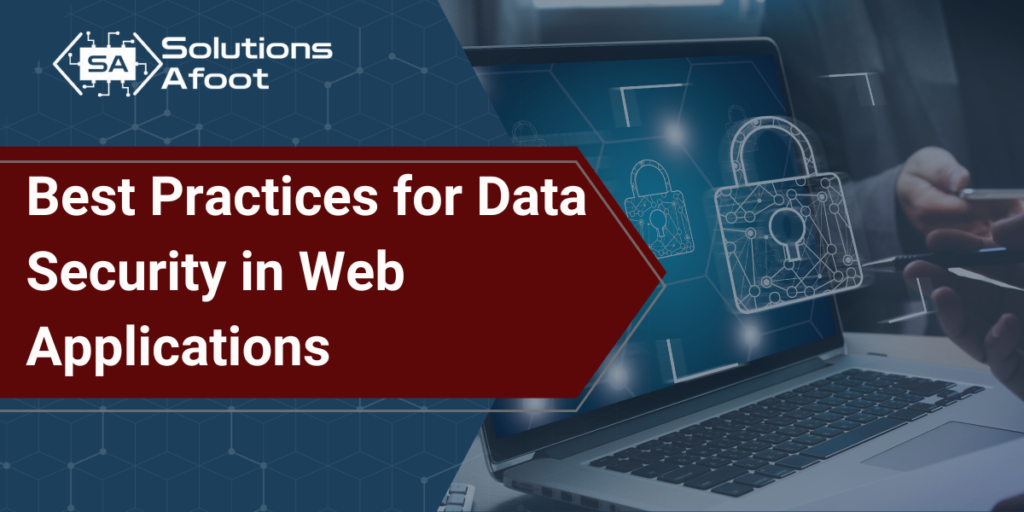Best Practices for Data Security in Web Applications

Securing Web Applications: Best Practices to Protect Your Business in a Digital Era
In an era where data drives decision-making and business operations, the protection of sensitive information has never been more critical. Data breaches are a growing concern, threatening not only financial stability but also the reputation of businesses across industries. According to a report by IBM, the average cost of a data breach in 2023 exceeded $4.5 million globally, a figure that continues to rise annually.
To safeguard against these threats, businesses must adopt robust security measures. This guide explores the importance of web application security, outlines best practices, and highlights how secure platforms like Caspio can help businesses fortify their defenses.
1. Why Data Security Should Be a Top Priority
The digital transformation of businesses has made web applications essential tools for operations, customer engagement, and data management. However, this reliance on web-based systems has also made them prime targets for cyberattacks.
The Growing Threat of Cybersecurity Breaches
- Rising Cybercrime: Cyberattacks are becoming more sophisticated, with ransomware and phishing attacks surging by over 85% in the last five years.
- High Stakes: A single breach can lead to stolen intellectual property, exposure of customer data, and operational disruptions.
Legal and Financial Ramifications
- Compliance Requirements: Regulations such as GDPR, HIPAA, and CCPA mandate stringent data protection measures. Non-compliance can result in hefty fines and legal repercussions.
- Reputation Damage: Beyond financial loss, data breaches erode customer trust, leading to churn and long-term brand damage.
2. Best Practices for Web Application Security
Securing web applications requires a multi-layered approach, combining technical measures with proactive monitoring and regular updates. Below are some of the most effective practices:
a. Encrypt Data
Encryption is fundamental to protecting sensitive information:
- SSL/TLS Protocols: Encrypt data in transit between servers and clients to prevent interception.
- Data-at-Rest Encryption: Secure stored data using advanced encryption standards (AES).
For a step-by-step guide on implementing SSL/TLS, check out Google’s SSL Security guidelines.
b. Implement Strong Authentication
Authentication controls access to your application and ensures only authorized users can log in.
- Multi-Factor Authentication (MFA): Add an extra layer of security by requiring two or more verification factors, such as passwords and one-time codes.
- Biometric Authentication: Use advanced methods like fingerprint or facial recognition for high-security applications.
c. Enforce Access Control
Access control minimizes the risk of unauthorized data exposure:
- Role-Based Access Control (RBAC): Assign permissions based on roles to ensure users only access the information necessary for their tasks.
- Least Privilege Principle: Limit access to the bare minimum required for a user to perform their role.
d. Regularly Update Software
Outdated software is one of the most common vulnerabilities exploited by hackers.
- Automatic Updates: Enable auto-updates for critical software and plugins.
- Patch Management: Implement a system to track and apply security patches promptly.
e. Conduct Regular Vulnerability Testing
Routine testing ensures your web application is prepared to withstand attacks:
- Penetration Testing: Simulate attacks to identify and address vulnerabilities.
- Security Audits: Regularly review security policies and system configurations.
For tools to facilitate penetration testing, explore OWASP’s top security testing tools.
3. Building Secure Applications with Caspio
While best practices are essential, choosing the right platform can significantly enhance your security posture. Caspio, a leading no-code platform for application development, integrates robust security features to protect sensitive data.
Built-In Security Features
- Data Encryption: Caspio employs enterprise-grade encryption for both data in transit and at rest.
- Access Control: Built-in tools enable administrators to define roles and permissions easily.
- Compliance: Caspio is designed to meet stringent compliance standards, including HIPAA for healthcare applications and GDPR for data privacy.
Case Study: Securing Patient Data in a Healthcare App
A regional healthcare provider used Caspio to develop a custom patient management system. By leveraging Caspio’s security features, the organization:
- Safeguarded sensitive patient records with HIPAA-compliant encryption.
- Reduced unauthorized access incidents by 60% through role-based access control.
- Improved operational efficiency with automated reporting and secure data sharing.
4. Innovations Shaping the Future of Web Application Security
The evolving cybersecurity landscape demands continuous innovation. Here are some emerging trends that are transforming application security:
AI-Powered Threat Detection
Artificial Intelligence is enabling real-time monitoring and threat detection, identifying anomalies and potential breaches before they occur.
Zero-Trust Architecture
Zero-trust principles dictate that no user or device should be trusted by default, even if they are within the network perimeter.
Blockchain for Data Security
Blockchain technology ensures tamper-proof data records, enhancing transparency and security for sensitive transactions.
Conclusion: Prioritizing Security for Long-Term Success
Securing web applications is not just about safeguarding data; it’s about protecting your business’s reputation, finances, and customer trust. By following best practices such as encryption, authentication, and regular vulnerability testing, and by leveraging secure platforms like Caspio, you can build resilient applications that stand the test of evolving threats.
Discover how Solutions Afoot can help secure your web applications with enterprise-grade features. Contact us today for a free discovery call
By adopting these measures, you’ll not only safeguard your digital assets but also position your business as a trusted leader in today’s data-driven world.
